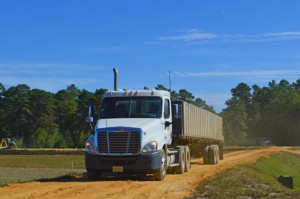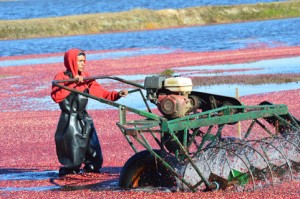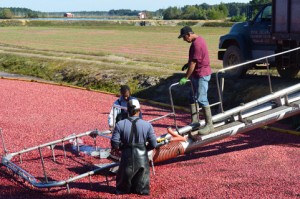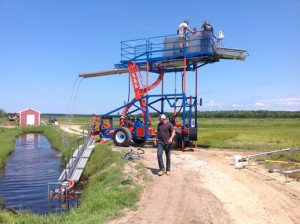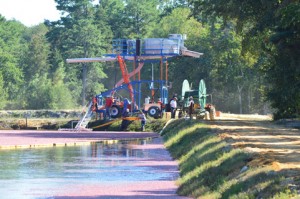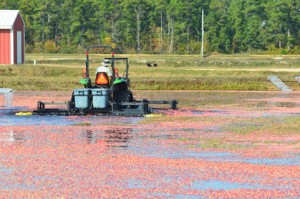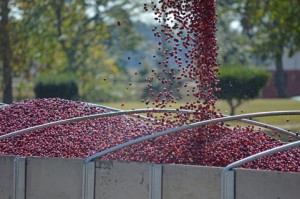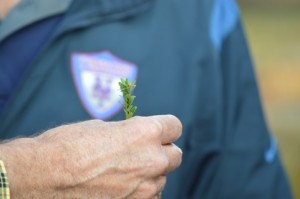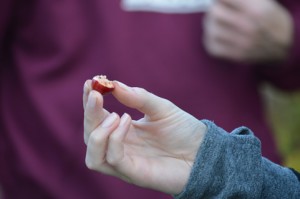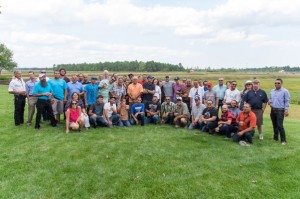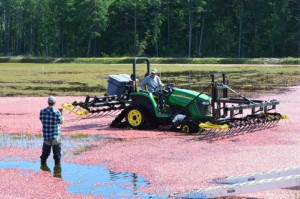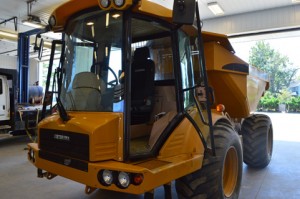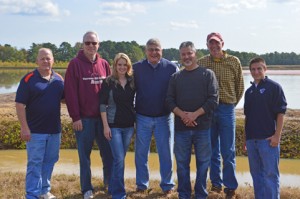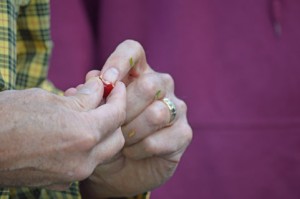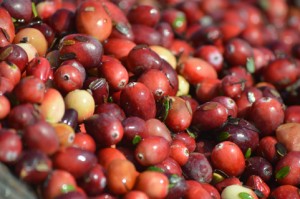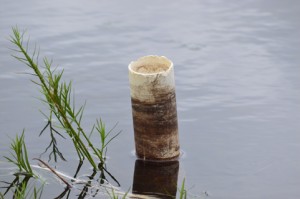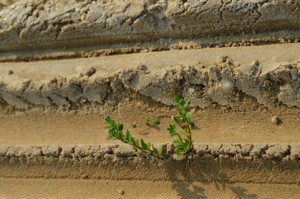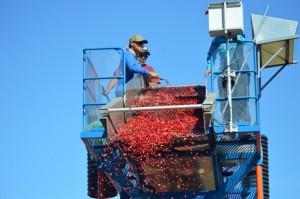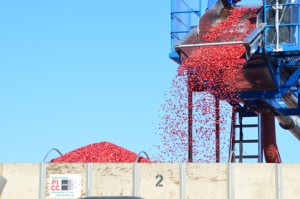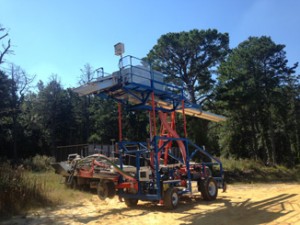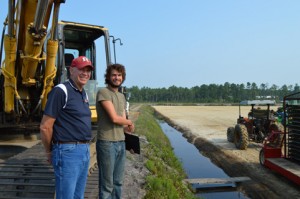Planting started last week on the latest bog reno project, and it’s moving along faster than ever! While in previous years we’ve started the fall planting after the harvest, we moved that forward in 2014 in order to take advantage of the weather, the longer daylight hours, and the increased team availability.
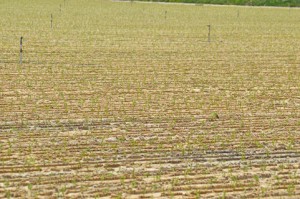
There are two methods of planting: conventional propagation, which means pressing mowed vines or prunings directly into the bogs to be established; and rooted cuttings, which means planting plants with roots already established. Pine Island has used both methods in the past; however, this year we will be using rooted cuttings. Another concern with planting is implementing an irrigation program, both with ground water and sprinklers, that provides moisture for vine growth without causing excessive soil saturation, which can lead to favorable conditions for phytopthora, which in turn can lead to fruit or root rot. Pine Island uses both ditches and sprinklers for irrigation. During the early spring, after the winter flood is removed, irrigation is usually covered by our frost protection program. However, concerns for adequate soil moisture should not be forgotten during frost season. Several warm, sunny days without rain or frost irrigation can result in the need for irrigation. Checking the soil yourself is extremely important; tensiometers are good, but it’s important to learn the hands-on method, as well.

So far our teams are averaging about four acres per day, which is fantastic. “So far the weather’s been with us,” says New Production Manager Mike Haines. “But another big change is with our equipment.” In the past, our planting team would have to first lower a cage containing the rooted cuttings into the new beds, then team members would need to manually switch the trays from the cage to two carts, each attached to a separate tractor. “Bob Shinn designed a different kind of wagon for us where we can actually put the cage right onto the wagon,” Mike says. “This eliminates a step, plus we can fit more on each wagon, so one tractor can serve both planters. A smaller crew and fewer pieces of equipment means planting more acres per day. We planned for 19 days of work, and we’ve definitely shaved a couple days off. I just hope the weather keeps cooperating!”

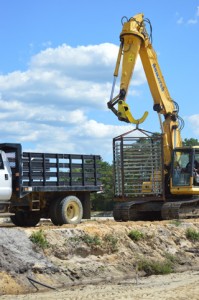
The rest of the process remains the same: rooted cuttings are taken from the cart and loaded onto the planter. Team members seated on the planter drop the vines into the carousel and then the vines are distributed into the pre-dug furrow. The planter is followed by other crew members, who make sure that the vines have been placed correctly.
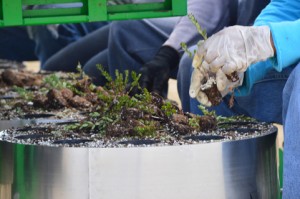
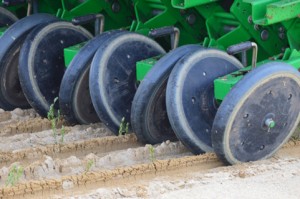
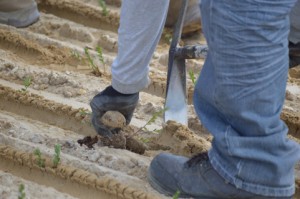
And in about three years, we should see some great results!

